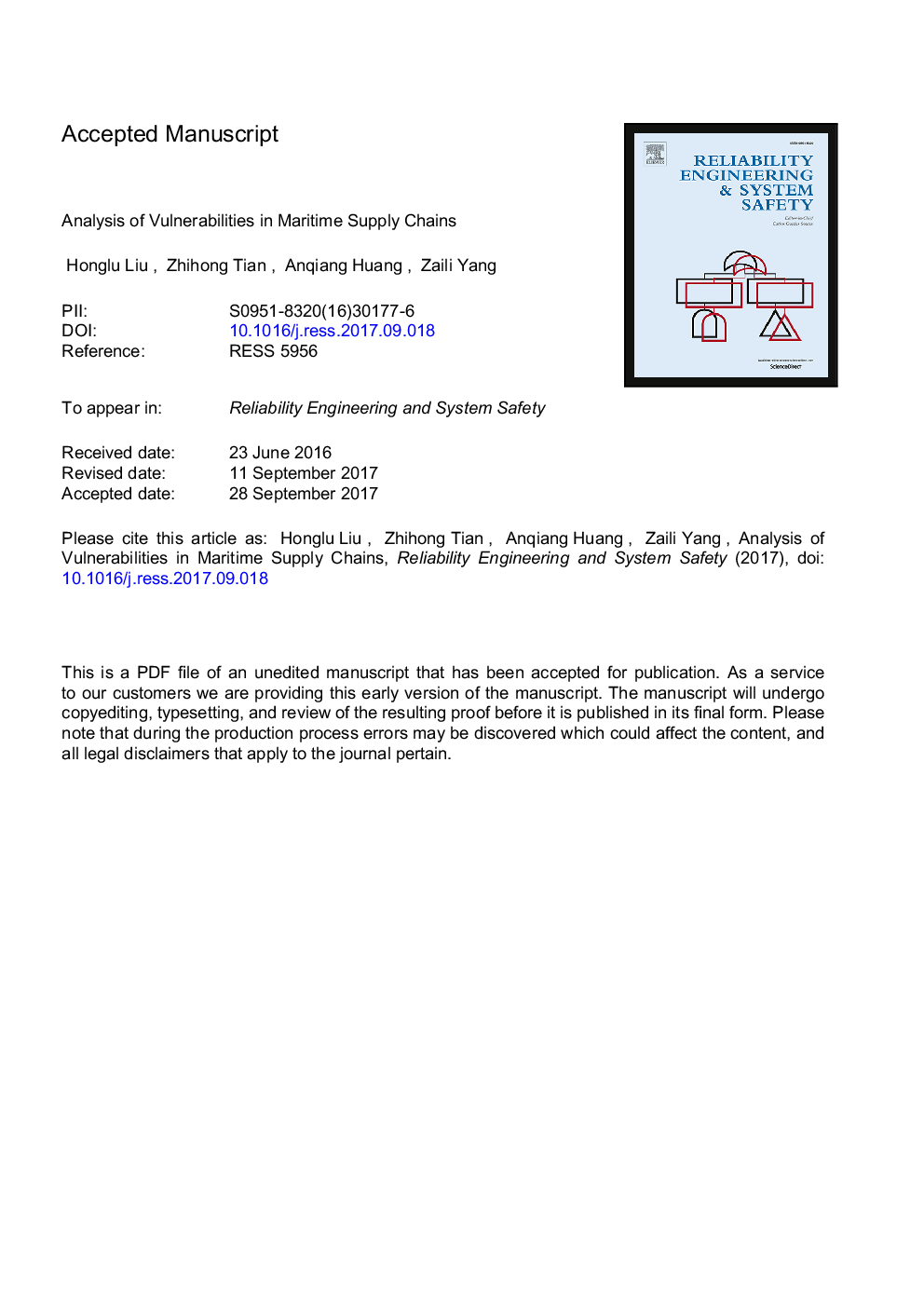| Article ID | Journal | Published Year | Pages | File Type |
|---|---|---|---|---|
| 5019291 | Reliability Engineering & System Safety | 2018 | 24 Pages |
Abstract
This paper aims to analyze the different concepts of “vulnerability” used in maritime supply chains, and to develop a novel framework with supporting models to identify and analyze the relevant vulnerabilities in the chains. A real case of the Maersk shipping line in its Asia-Europe route is studied to demonstrate the applicability of the proposed framework. We find that the investigated network has stronger robustness against random failures than that when facing deliberate attacks. Furthermore, to identify vulnerable nodes (i.e. ports) of the network, two different types of analysis are undertaken through a multi-centrality model and a robustness analysis model, respectively. Consequently, the vulnerabilities estimated through robustness analysis can ascertain those by the classical centrality methods when they appear on both analysis results. More importantly, the similarity between the two outcomes can help gain more confidence on the accuracy in terms of the identification of the vulnerabilities in the system, while the difference (if any) such as those identified by the robustness analysis but not by the centrality analysis (or vice versa) can trigger a further investigation to find the comprehensive vulnerable nodes against different threats/hazards. It will aid rational decision on design and operation of resilient and robust maritime supply chains.
Keywords
Related Topics
Physical Sciences and Engineering
Engineering
Mechanical Engineering
Authors
Liu Honglu, Tian Zhihong, Huang Anqiang, Yang Zaili,
